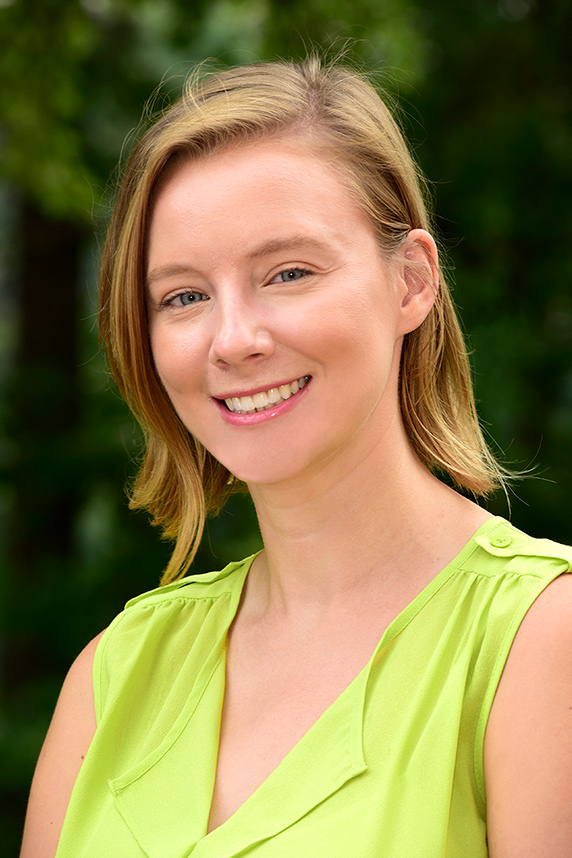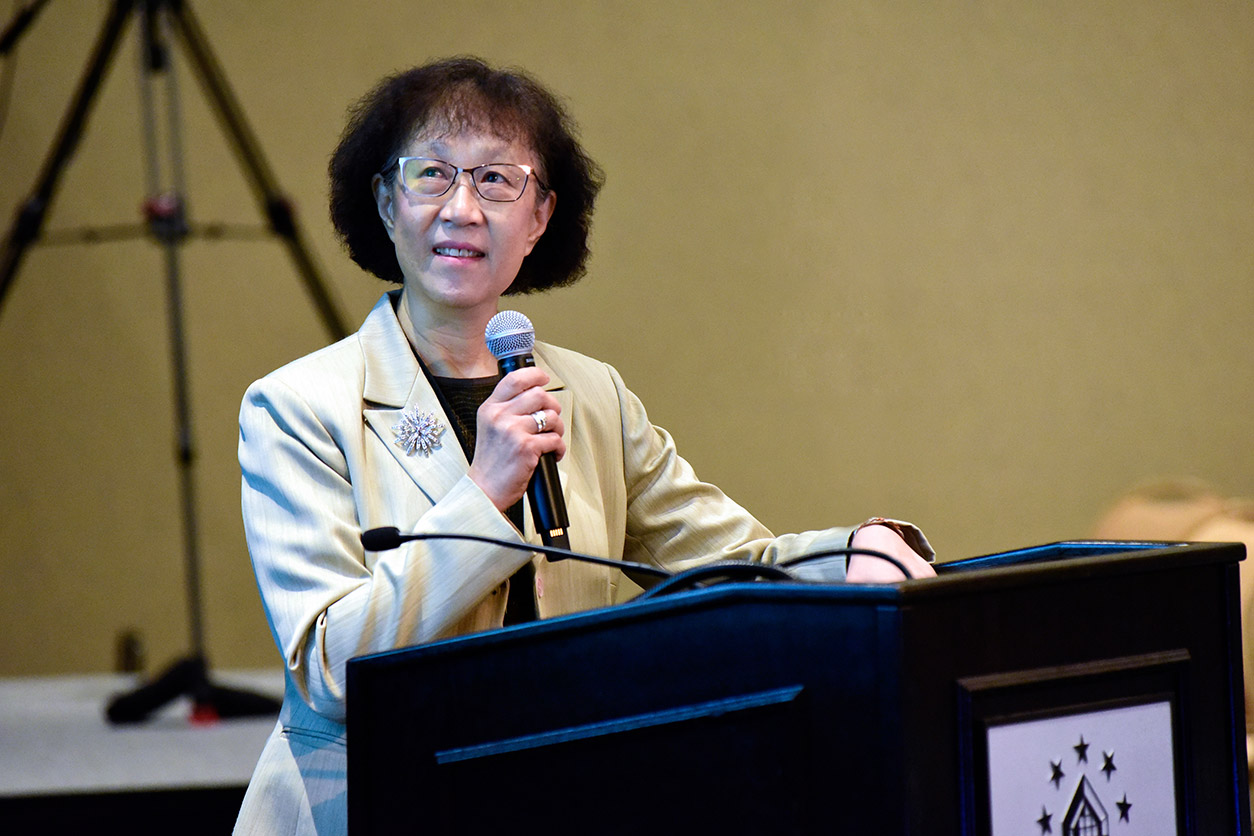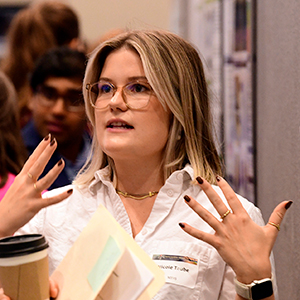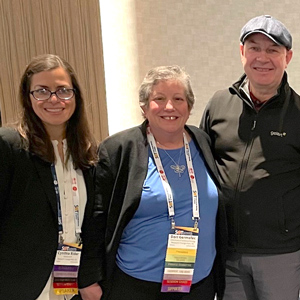Two postdoctoral researchers and three grantees are among the 2020 Society of Toxicology (SOT) award winners. The awards were announced despite cancellation of the annual meeting, scheduled for mid-March, due to concerns about Covid-19.
 Huang’s science outreach efforts include writing blog posts and participating in a video on nonstick cookware. She is also a guest writer for the Environmental Factor. (Photo courtesy of Steve McCaw)
Huang’s science outreach efforts include writing blog posts and participating in a video on nonstick cookware. She is also a guest writer for the Environmental Factor. (Photo courtesy of Steve McCaw)Mimi Huang, early career scientist
The SOT Food Safety Specialty Section selected Mimi Huang, Ph.D., for the Frank C. Liu Early Career Scientist Award. Huang studies per- and polyfluoralkyl substances (PFAS) to determine connections between chemical structures and toxicities.
Huang, who is an Intramural Research Training Award (IRTA) fellow in the Toxicology Branch of the NIEHS Division of the National Toxicology Program (NTP), is especially interested in understanding effects of dietary exposure to PFAS. “My research seeks to do this by investigating similarities or differences in toxicity based on chemical structure, as well as the sex of the exposed individual. Understanding how structure or sex modifies toxicity is important for prioritizing which PFAS to study or to develop regulations for.”
“We are very proud of the outstanding work Mimi has done in the area of food safety,” said Huang’s mentor Dori Germolec, Ph.D., also in the NTP Toxicology Branch. “In addition to her scientific work, Mimi communicates her science to the public in novel ways, to highlight the potential toxicity and safety of cookware, food packaging, and food contaminants.”
Katelyn Lavrich, postdoc excellence
The Regulatory and Safety Evaluation Specialty Section chose Katelyn Lavrich, Ph.D., from NTP for the Postdoc Excellence Award. Lavrich uses 3D spheroid cultures of human liver cells called primary hepatocytes (PHH) to develop better toxicity tests.
 Lavrich is especially interested in modeling genetic diversity in vitro for toxicological screening and evaluating safety of botanical dietary supplements. (Photo courtesy of Steve McCaw)
Lavrich is especially interested in modeling genetic diversity in vitro for toxicological screening and evaluating safety of botanical dietary supplements. (Photo courtesy of Steve McCaw)“3D PHHs could greatly improve the human relevance and predictivity of high-throughput toxicology screening for safety evaluation of chemical and drugs,” she said. “By modeling human biology better, 3D PHHs can increase the predictivity of in vitro safety testing and identify potentially harmful drugs or chemicals before they reach market or even enter animal testing.”
“I’m truly honored to work with Katelyn as she pioneers the development, application, and integration of 3D in vitro liver models and assay systems as new approach methods in toxicology,” said Stephen Ferguson, Ph.D., her mentor in the NTP Laboratory.
“In her role as an IRTA trainee, Katelyn has been outstanding as a leader, experimentalist, and data analyst,” he added. “Her recognition by SOT with a Postdoc Excellence Award further demonstrates her role in shaping the future of toxicology research.”
Shuk-Mei Ho, distinguished scholar
Shuk-Mei Ho, Ph.D., from the University of Arkansas for Medical Sciences, is the 2020 SOT Distinguished Toxicology Scholar. She is a long-time grantee and serves on the NIEHS National Advisory Environmental Health Sciences Council (council). Ho was recognized for pivotal work on endocrine disruptors and developmental origins of adult disease.
“Her research relating early exposure to bisphenol A to increased cancer risk later in life bolstered the ban against the use of bisphenol A in products for babies and children,” the award stated.
 As vice chancellor for research, Ho oversees strategic planning and administration of research portfolios. She is shown here at a 2019 meeting of the NIEHS council. (Photo courtesy of Steve McCaw)
As vice chancellor for research, Ho oversees strategic planning and administration of research portfolios. She is shown here at a 2019 meeting of the NIEHS council. (Photo courtesy of Steve McCaw)James Luyendyk, achievement
James Luyendyk, Ph.D., from Michigan State University (MSU) is the 2020 winner of the SOT Achievement Award. With NIEHS funding, Luyendyk is studying mechanisms of liver fibrosis, which is one way that substances may cause liver damage.
“His research, involving both drug and environmental exposures, explores the mechanisms by which blood-clotting factors contribute to liver disease, which has challenged assumptions in multiple fields, including toxicology, and has inverted perceptions on the role coagulation factors play in the liver’s response to toxicants,” read the award.
Robyn Tanguay, paper of the year
The Toxicological Sciences Paper of the Year was co-authored by NIEHS council member Robyn Tanguay, Ph.D., from Oregon State University (OSU). She directs the Superfund Research Program center at OSU.
The paper compared zebrafish and planarian model systems for studies of developmental neurotoxicity. The award commended the authors for demonstrating that the models provided a high degree of predictability, using studies of known developmental neurotoxicants. Co-author Lisa Truong, Ph.D., also from OSU, is a former grantee, and the research team used a chemical library from NTP.
Citation: Hagstrom D, Truong L, Zhang S, Tanguay R, Collins ES. 2019. Comparative analysis of zebrafish and planarian model systems for developmental neurotoxicity screens using an 87-compound library. Toxicol Sci 167(1):15–25.









